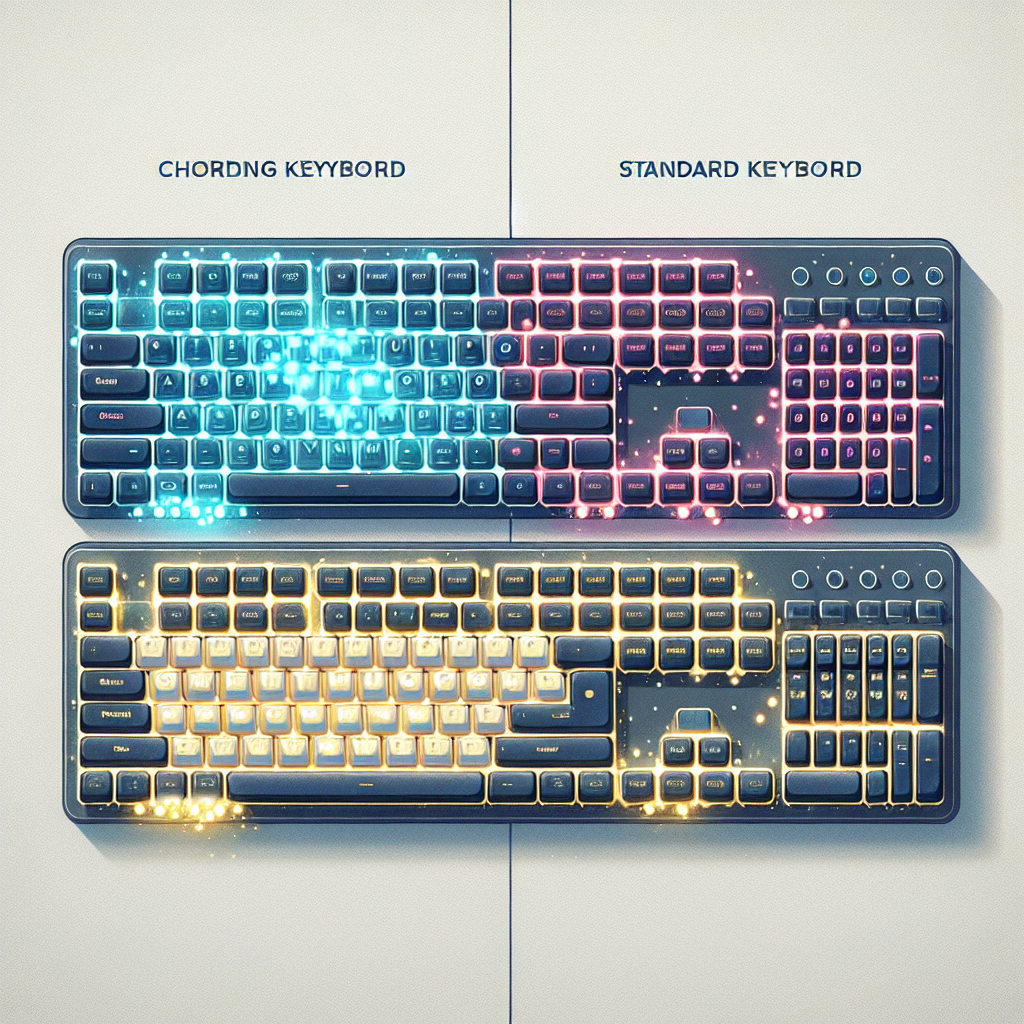Keyboards are indispensable tools in our digital world, enabling us to communicate, code, and control various devices. Among the diverse range of keyboards available, chording keyboards and standard keyboards represent two distinct paradigms in design and functionality. Understanding these differences can help users decide which type best meets their needs.
Comparison of Chording Keyboards and Standard Keyboards
Below is a comparative overview of chording keyboards and standard keyboards in various aspects:
| Parameter | Chording Keyboards | Standard Keyboards |
|---|---|---|
| Design | Minimalist, fewer keys | Full QWERTY layout, 80-100+ keys |
| Typing Method | Chord-based, pressing multiple keys simultaneously | Pressing individual keys sequentially |
| Learning Curve | Steeper, requires practice to build muscle memory | Shallower, most are familiar with QWERTY layout |
| Typing Speed | Can be faster with proficiency | Moderate, depends on user’s typing skills |
| Usage Scenarios | Accessibility, compact devices, specialist applications | General use, personal and office computing |
| Portability | Highly portable due to fewer keys | Less portable due to larger size |
Design of Chording Keyboards
Chording keyboards are designed with a minimalist approach in mind. Typically, they feature significantly fewer keys than standard keyboards, sometimes only a handful of them. Instead of each key representing a single character, users press combinations or ‘chords’ of keys simultaneously to produce characters or commands. This design greatly reduces the number of keys and the space required, making chording keyboards exceptionally compact and portable.
Typing Methodology in Chording Keyboards
One of the most distinctive aspects of chording keyboards is their typing methodology. Each keystroke involves pressing multiple keys in combination, akin to playing chords on a piano. This requires a different cognitive approach compared to the linear pressing of individual keys on standard keyboards. For beginners, this chording method introduces a steep learning curve, but with practice, it can become an efficient way to type or input commands.
Design of Standard Keyboards
Standard keyboards, often based on the QWERTY layout, come with a full set of around 80 to 100+ keys. This design has been around for decades and is widely recognized by users worldwide. Each key corresponds to an individual character or function, making it intuitive for new users to learn and use. Standard keyboards are typically larger and less portable compared to chording keyboards.
Typing Methodology in Standard Keyboards
Typing on a standard keyboard is a linear process where each key represents a specific character when pressed. Most users are familiar with this method due to its widespread adoption in schools, offices, and homes. It’s also easier to learn and requires less initial training or adaptation. However, achieving high typing speeds can still require dedicated practice and the development of touch typing skills.
Learning Curve and Typing Speed
The learning curve for chording keyboards is generally steeper compared to standard keyboards. Learning to press multiple keys in combination to form characters can be initially challenging. Users need to dedicate time to build the necessary muscle memory to use this typing method efficiently. In contrast, most people are already familiar with the layout and operation of standard keyboards, which makes them easier to learn.
Despite the initial difficulty, proficient users of chording keyboards can achieve impressive typing speeds. Because multiple characters or commands can be produced with single chords, users can potentially type faster than they could with a standard keyboard. Meanwhile, standard keyboards offer moderate typing speeds that depend heavily on the user’s skill and familiarity with the keyboard layout.
Usage Scenarios
Chording keyboards are particularly suited to specialized applications and environments. These include:
- Accessibility: They can be adapted for individuals with physical disabilities, enabling more accessible text input.
- Portable devices: Their compact size makes them ideal for use in portable and wearable tech, such as smartwatches or hand-held devices.
- Specialist applications: Used in certain professional fields such as stenography or space missions where space is at a premium.
Standard keyboards, on the other hand, are ubiquitous and versatile, suitable for various general-purpose computing tasks such as typing documents, playing games, and programming. They are commonly found in homes, offices, and educational settings worldwide.
Portability and Efficiency
Because of their minimalist design, chording keyboards offer superior portability. They are lightweight, easy to carry, and require less space, making them perfect for on-the-go use. This is a stark contrast to standard keyboards, which are bulkier and less convenient to transport but offer a wider range of functionalities and a more comfortable typing experience for long durations.
Conclusion
In summary, chording keyboards differ significantly from standard keyboards in terms of design, typing methodology, learning curve, and usage scenarios. While they can offer enhanced speed and portability, they come with a steeper learning curve and are suited to more specialized applications. Standard keyboards provide greater versatility and ease of use, making them ideal for general computing tasks. The choice between the two ultimately depends on the specific needs and preferences of the user.

